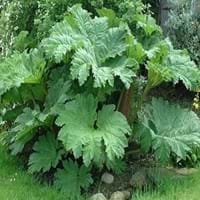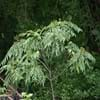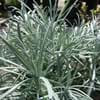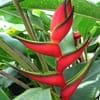Life Span
Perennial
Perennial
Type
Tender Perennial
Bulb or Corm or Tuber
Origin
Central America
South America
Types
Not Available
Pamianthe cardenasii , Pamianthe parviflora , Pamianthe peruviana
Number of Varieties
Not Available
Habitat
Wet forest, Woodland Garden
All sorts of environments
USDA Hardiness Zone
9-12
8-10
Sunset Zone
H1, 14, 15, 16, 17, 20, 21, 22, 23, 24
21,22
Habit
Clump-Forming
Clump-Forming
Flower Color
Dark Red, Dark Salmon, Sienna
White
Flower Color Modifier
Bicolor
Bicolor
Fruit Color
Not Available
Green
Leaf Color in Spring
Green
Dark Green
Leaf Color in Summer
Green
Light Green
Leaf Color in Fall
Green
Several shades of Green
Leaf Color in Winter
Light Green
Light Green
Leaf Shape
Lobed
Strap shaped
Plant Season
Spring, Summer, Fall, Winter
Spring, Summer, Fall
Sunlight
Partial Sun, Partial shade
Partial Sun, Partial shade
Type of Soil
Loam
Loam, Sand
The pH of Soil
Acidic, Neutral
Acidic, Neutral, Alkaline
Soil Drainage
Average
Average
Bloom Time
Not Available
Spring, Late Spring, Early Summer, Summer, Late Summer
Tolerances
Drought
Drought
Where to Plant?
Container, Ground
Ground, Pot
How to Plant?
Seedlings
Offsets
Plant Maintenance
Medium
Medium
Watering Requirements
Regular watering during dry periods
Keep the ground moist but not water-logged
In Summer
Lots of watering
Lots of watering
In Spring
Moderate
Moderate
In Winter
Average Water
Average Water
Soil pH
Acidic, Neutral
Acidic, Neutral, Alkaline
Soil Type
Loam
Loam, Sand
Soil Drainage Capacity
Average
Average
Sun Exposure
Partial Sun, Partial shade
Partial Sun, Partial shade
Pruning
Remove damaged leaves, Remove dead branches, Remove dead leaves
Pinch or prune as they grow to promote branching and bushiness, Remove damaged leaves, Remove dead branches, Remove dead leaves, Requires little pruning
Fertilizers
Dilute liquid fertiliser
All-Purpose Liquid Fertilizer, High phosphorus
Pests and Diseases
Downy mildew, Leaf spot, Rust
Leaf spot, Mosaic viruses
Plant Tolerance
Drought
Drought
Flower Petal Number
Not Available
Single
Fragrant Flower
Not Available
No
Foliage Texture
Bold
Coarse
Foliage Sheen
Matte
Glossy
Attracts
Snails
Bees, Birds, Bumblebees, Butterflies, Hummingbirds, pollinators
Allergy
allergic reaction
Unknown
Aesthetic Uses
Bog Garden, Water gardening
Beautification, Bouquets, Ornamental use, Showy Purposes
Beauty Benefits
Not Available
No Beauty Benefits
Environmental Uses
Air purification
Air purification
Medicinal Uses
Not Available
No Medicinal Use
Part of Plant Used
Stem
Not Available
Other Uses
Jam, Jelly, Sauces
Beneficial species for attracting pollinators, Decoration Purposes
Used As Indoor Plant
No
No
Used As Outdoor Plant
Yes
Yes
Garden Design
Feature Plant, Mixed Border, Tropical
Bog Garden, Container, Feature Plant, Foundation, Mixed Border, Water Gardens
Botanical Name
GUNNERA insignis
HYMENOCALLIS longipetala
Common Name
Giant Rhubarb, Poorman's Umbrella
Peruvian Daffodil, Spiderlily
In Hindi
Giant Rhubarb
peruvian daffodil
In German
Riesen- Rhabarber
peruvian daffodil
In French
Géant rhubarbe
peruvian daffodil
In Spanish
Gigante ruibarbo
Pamianthe
In Greek
Giant Ραβέντι
peruvian daffodil
In Portuguese
Rhubarb gigante
peruvian daffodil
In Polish
Giant Rabarbar
peruvian daffodil
In Latin
Giant RHEUM
peruvian daffodil
Phylum
Magnoliophyta
Magnoliophyta
Class
Magnoliopsida
Liliopsida
Order
Haloragales
Asparagales
Family
Gunneraceae
Amaryllidaceae
Clade
Angiosperms, Core eudicots, Eudicots
Angiosperms, Monocots
Tribe
Not Available
Clinantheae
Subfamily
Not Available
Amaryllidoideae
Number of Species
Not Available
Not Available
Season and Care of Giant Rhubarb and Peruvian Daffodil
Season and care of Giant Rhubarb and Peruvian Daffodil is important to know. While considering everything about Giant Rhubarb and Peruvian Daffodil Care, growing season is an essential factor. Giant Rhubarb season is Spring, Summer, Fall and Winter and Peruvian Daffodil season is Spring, Summer, Fall and Winter. The type of soil for Giant Rhubarb is Loam and for Peruvian Daffodil is Loam, Sand while the PH of soil for Giant Rhubarb is Acidic, Neutral and for Peruvian Daffodil is Acidic, Neutral, Alkaline.
Giant Rhubarb and Peruvian Daffodil Physical Information
Giant Rhubarb and Peruvian Daffodil physical information is very important for comparison. Giant Rhubarb height is 120.00 cm and width 180.00 cm whereas Peruvian Daffodil height is 61.00 cm and width 61.00 cm. The color specification of Giant Rhubarb and Peruvian Daffodil are as follows:
Giant Rhubarb flower color: Dark Red, Dark Salmon and Sienna
Giant Rhubarb leaf color: Green
Peruvian Daffodil flower color: White
- Peruvian Daffodil leaf color: Dark Green
Care of Giant Rhubarb and Peruvian Daffodil
Care of Giant Rhubarb and Peruvian Daffodil include pruning, fertilizers, watering etc. Giant Rhubarb pruning is done Remove damaged leaves, Remove dead branches and Remove dead leaves and Peruvian Daffodil pruning is done Pinch or prune as they grow to promote branching and bushiness, Remove damaged leaves, Remove dead branches, Remove dead leaves and Requires little pruning. In summer Giant Rhubarb needs Lots of watering and in winter, it needs Average Water. Whereas, in summer Peruvian Daffodil needs Lots of watering and in winter, it needs Average Water.





